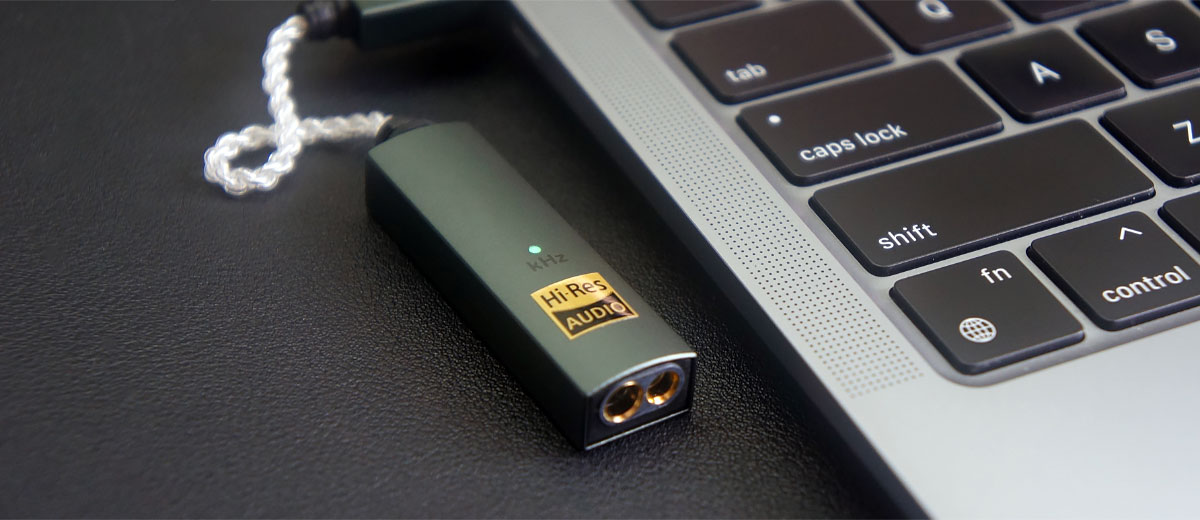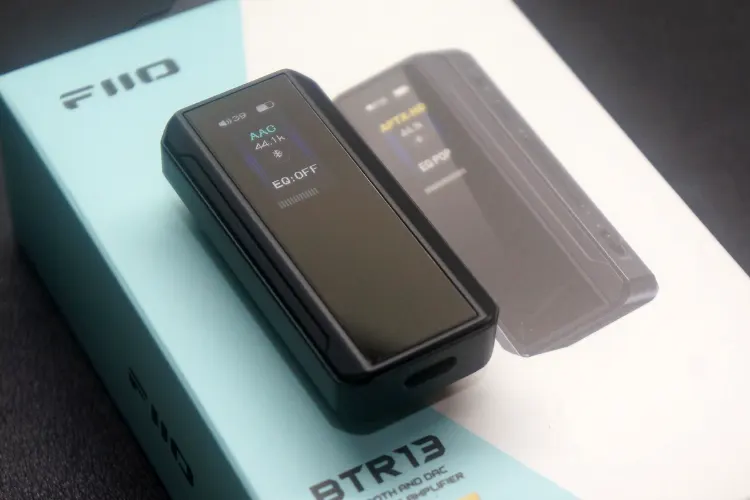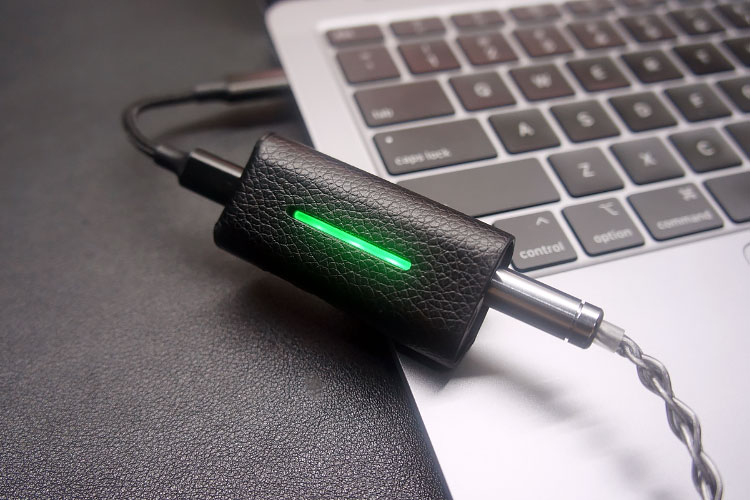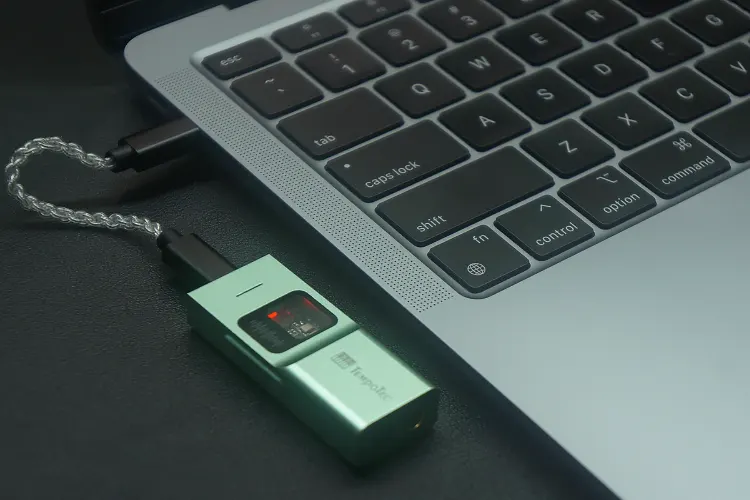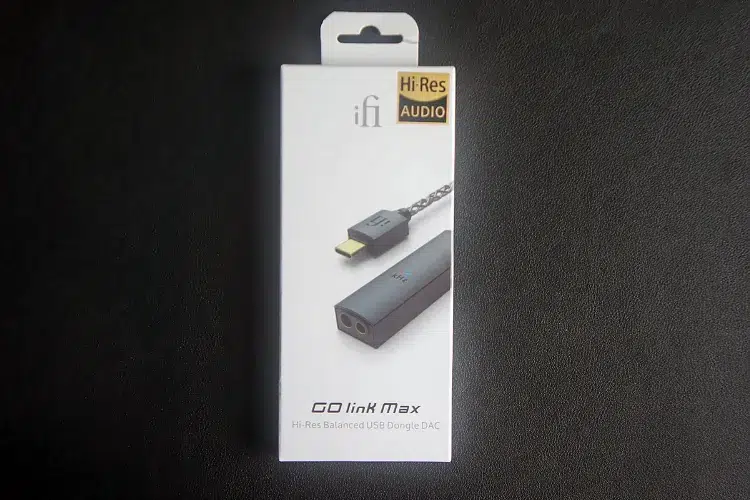Select Comparisons
FiiO BTR13
Technical
The FiiO BTR13 uses dual Cirrus Logic CS43131 DAC Chips to decode up to PCM 16BIT/96kHz, while the GO link Max and its dual ESS Sabre ESS 9219 DACs let it decode up to 384kHz and up to DSD256.
The BTR13 has a female USB-C port for power and data, letting the user decide which cable to use, whereas the GO link Max comes with an attached USB-C cable that can be adapted to lightning and USB-A with the unit’s included accessories.
Both dongles have 3.5mm and 4.4mm headphone outputs, however, unlike the GO link Max, the BTR13 also supports wireless connectivity, making it a more versatile unit overall.
The FiiO BTR13 can drive up to 240mW via its 4.4mm output and 120mW via its 3.5mm SE output, while the GO link Max can power to 241 mW into 32Ω via the 4.4mm balanced output and 100mW into 32Ω through the 3.5mm single-ended output.
Design
Both dongles make use of different form factors, with the GO link Max being significantly smaller in every dimension. Despite being lighter and smaller, the GO link Max and its metal build has a denser feeling, contributing to a more premium experience.
Both dongles are pocketable and are easy to hold together with a phone in one hand. When connected to my phone via the included USB-C cables, both dongles stayed firmly attached despite my on-the-go usage.
However, the GO link Max’s smaller size made it feel as if it was just an extension of the IEM cable, further adding to its portability and usability.
Performance
The iFi audio GO link Max and FiiO BTR13 share similar strengths in capturing the detail and harmonics of string instruments, but each device excels in distinct areas.
The BTR13 leans towards a more pronounced sub-bass, offering greater emphasis and texture in the low frequencies, which can enhance depth in bass-heavy tracks.
Vocals on both devices are well-layered and highlighted, though the GO link Max provides a smoother and more natural vocal presentation, which some listeners might find particularly appealing.
The BTR13 distinguishes itself with a wider soundstage and superior dynamics, delivering a more spacious and immersive feel in complex arrangements.
Its treble presentation is also more restrained, appealing to those who prefer a relaxed high-end. The GO link Max offers a more energetic treble response, adding a sense of air and shimmer to the overall sound.
LETSHUOER DT03
Technical
The DT03 and the GO link Max use the same dual Sabre ESS9219C DAC implementation. Both dongles can decode up to PCM 384kHz and DSD256 natively.
The DT03 has a USB-C Female jack as its sole input, letting users connect their own USB-C cables to the units, whereas the GO link Max comes with an attached USB-C Cable.
Both dongles share the same suite of outputs, including 3.5mm SE and 4.4mm balanced outputs.
The DT03 can output up to 195mW@32Ω through its balanced output and 78mW@32Ω through its SE output.
The smaller yet more powerful GO link Max can drive up to 241mW into 32Ω via its balanced output and 100mW into 32Ω through the 3.5mm single-ended output.
Design
The GO link Max is significantly smaller than the DT03, making it feel like it’s in a different product class altogether. The DT03’s larger body is expertly machined with curves and chamfers, making it easy to hold.
The smaller GO link Max has a similarly premium feeling finish, however, its smaller size not only makes it more portable, but also makes it more non-obstructive when listening to wired IEMs on the go.
Performance
The warmer-sounding DT03 excels in creating a wider-sounding sound stage, especially in tracks with deep velvety synths that push through every part of the mix.
In terms of sub-bass performance, both units are on par, offering solid depth without overpowering other frequencies.
The GO link Max has a more forward presentation of instruments in the mid-range, particularly string instruments. This gives them a more engaging sound that can be easily placed and identified.
The DT03’s warmer mid-range has a slightly worse dynamic range, but it excels in delivering bass lines and male vocals with a better sense of authority.
Treble presentation on the DT03 is tamer than that of the GO link Max while maintaining a respectable sense of detail and resolution.
Both devices similarly emphasize vocals, though the GO link Max tends to deliver a slightly smoother, more natural vocal presentation.
Tempotec Sonata BHD Pro
Technical
The Tempotec Sonata BHD Pro, with its dual CS43131 DAC configuration, and the iFi audio GO link Max, featuring dual ES9219MQ DACs, offer comparable decoding capabilities.
Both devices support PCM up to 32-bit/384kHz and DSD256, though the BHD Pro edges out the GO link Max by including support for up to 8x MQA unfolding, catering to audiophiles who value Tidal’s streaming format.
While both dongles include a USB-C input, the BHD Pro has the added advantage of a removable USB-C female port, allowing users to swap cables for better flexibility.
It also includes a USB-C to Lightning cable in addition to a USB-C to USB-C cable, offering better out-of-the-box compatibility for iOS users compared to the GO link Max.
In terms of power output, the BHD Pro boasts significantly higher capabilities, with up to 280mW@32Ω (BAL) and 125mW@32Ω (SE), compared to the GO link Max’s 241mW@32Ω (BAL) and 75mW@32Ω (SE).
This gives the BHD Pro the edge in driving more demanding headphones.
Design
Both the BHD Pro and GO link Max feature metal shells, with the GO link Max opting for an attached cable as opposed to the cable of the BHD Pro.
The BHD Pro includes a see-through PCB window, offering a unique aesthetic, while the GO link Max opts for a sleek, minimalist dark green design.
The GO link Max is slightly more portable, thanks to its shorter and more compact design, making it easier to carry for everyday use.
Performance
The BHD Pro delivers fuller bass compared to the GO link Max, with a stronger emphasis on kick drums and sub-bass texture.
However, the GO link Max’s bass presentation is tighter and cleaner, making it more suitable for tracks requiring precision over sheer impact.
For midrange performance, the BHD Pro excels in vocal presentation, offering a fuller and more natural timbre that works well for vocal-centric genres.
The GO link Max also performs admirably, with vocals presented with good clarity and a forward presence, though it leans toward a slightly leaner tonality.
Treble is where the GO link Max shines with its crisp and energetic high-end, delivering hi-hats and cymbals with sparkle and clarity.
The BHD Pro, by contrast, offers a more relaxed treble response, which might appeal to listeners preferring a smoother and more forgiving sound signature.
My Verdict
The iFi audio GO link Max is a very compact dongle with a surprisingly high-power output, letting it drive a wide range of IEMs and a decent selection of headphones.
However, I found its sound signature best complements warmer or bass-focused IEMs, since it synergizes well with the dongle’s emphasis towards the upper mid-range and treble while compensating for its lean bass response.
The iFi audio GO link Max dongle DAC is one of those rare cases wherein the smaller option packs the same, if not more, punch than its competitors.
At $79, it’s a good starting point for those getting into IEMs and headphones, however, its colored tonality may limit its pairing versatility.
iFi audio GO link Max Technical Specifications
- DAC Chips: Dual ESS Sabre ES9219 DACs
- Output(s): 3.5mm Single Ended and 4.4mm Balanced
- THD+N <0.00016%
- Output Power: 100mW @32 Ohms (SE) and 241mW@32 Ohms (BAL)

